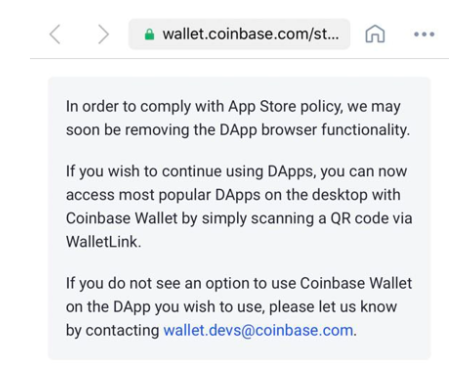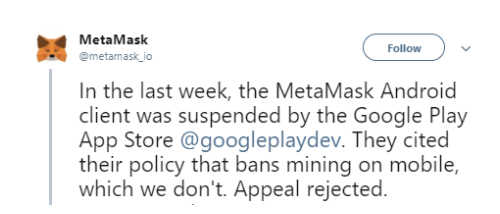DeFi Eighty-One Difficulties: Starting from the App Store delisting dApp
Source | Defirate.com
Translation | First Class (First.VIP)
Last week, Google Play and the Apple App Store both removed crypto applications.
- Objective data tells you who is the hardest core public chain in 2019?
- Blockchain ushers in a new cycle of industrial landing, the "chain for the chain" or the necessary stage
- Getting on the blockchain? Not much to do
Before the public adopts DeFi products and services, there are still 981 barriers, including accessibility, user experience, speed, and so on.
The first barrier facing DeFi is the App Store / Android application store.
Apple's app store policy has raised concerns about coindesk. In order to prevent their apps from being taken down by the Apple App Store, Coindesk issued a statement saying it would disable its dApp browser feature.

On January 1, the Google Play app store banned the popular Android client MetaMask. Google claims that although MetaMask does not have a mining function, it violates the mining industry's policy on mining, so the application was removed.

Abandoned Car
Censorship by app store authorities has forced many cryptographic applications to give up ease of use in exchange for "security."
A common method of DeFi is to remove support for local dApps and let users connect to in-app browsers. This approach allows application vendors to avoid infringing any policies and still be able to indirectly connect to the DeFi service.
Unfortunately, the in-app browser is difficult to use and the user experience is very poor, which adds another level of competition between DeFi applications and traditional financial applications.
For the average person, DeFi is often a viable alternative to traditional financial services. Therefore, ease of use is one of the most important properties. To sacrifice ease of use in order to have a place in the app store, it is not a viable long-term solution at all.
Slow down
In order for DeFi applications to gain more exposure and assurance in the app store, we need to improve two points:
1. Set better app store policies and higher decision-making transparency.
The relevant policies of the application store and the encryption industry are always ambiguous, which is a problem that needs to be solved urgently. Allowing them to go to the app store instead deleted key features, which is a compromise between developers and app stores.
The policy needs to list explicitly prohibited content, and for the benefit of the entire industry, the appeal process must also be more open and transparent.
2. DeFi supervision at the government level.
Broader regulation of DeFi products and services at the government level will bring more legitimacy to the field. This may be a more effective solution, as app stores have lower permissions in determining what is acceptable and prohibited in the cryptocurrency space.
No matter which kind of improvement plan is adopted, there are no shortcuts to solve this problem. In the short term, developers of encrypted applications will continue to feel the fear of being dominated by the app store and have no choice. In this way, it is undoubtedly a castration on the crypto industry.
We will continue to update Blocking; if you have any questions or suggestions, please contact us!
Was this article helpful?
93 out of 132 found this helpful
Related articles
- SheKnows year-end ultimate debate | 2020, the year when the public chain supervision will break?
- On Decentralized Liquidity Mechanism: Taking Uniswap, Bancor, etc. as Examples
- Opinion | Central bank digital currency and other digital currencies, both temporarily or little impact
- 2019 DeFi Industry Research Report: DeFi lending continues to grow and expand in 2020, and stablecoins will continue to grow
- Technical Interpretation | On-chain Capacity Expansion Technology Guide (1): Data Layer and Network Layer
- Research Report | Analysis Report on Quantum Mechanics and Blockchain Security Technology
- IMF urges Philippine central bank to collect crypto exchange transaction data and use data for macroeconomic analysis






